Adaptive Sampling for Urban Air Quality through Participatory Sensing
Abstract
:1. Introduction
- It has been found that urban air shows some specific patterns such as the “weekend effect” and the “holiday effect”. By knowing the pattern rules, it helps to decide the sampling parameter. In AS-air, we firstly design the method to find the pattern rules between sensing data and urban air quality by digging the correlations between them based on Apriori algorithm.
- Based on it, we then propose an adaptive sampling scheme by using Q-learning to adapt sampling parameter according to the outside sensing environment. According to the learned pattern rules, we predict the on-line air quality during sensing and use it to accelerate the Q-learning process of sampling strategy to convergence.
- As-air provides an energy-efficient sampling scheme that is adaptive to the outside air environment with good sampling performance, which is suitable for mobile and on-and-off application scenarios for smartphone participatory sensing.
2. Related Work
2.1. System Frameworks for Participatory Sensing
2.2. Sampling Data Recruitment in Participatory Sensing
2.3. Adaptive Sampling in Wireless Sensor Networks
3. System Overview
4. Adaptive Sampling Scheme for Urban Air Quality Sensing (AS-Air)
4.1. Urban Air Pattern Rules
4.2. Adaptive Sampling Strategies
5. Performance Evaluation
5.1. Experimental System and Dataset Built
5.2. Simulations of AS-Air
5.2.1. Apriori-Based Pattern Rules Learning
5.2.2. AS-Air Evaluations
6. Conclusions and Future Work
Acknowledgments
Author Contributions
Conflicts of Interest
References
- 2016 Environmental Performance Index. Available online: https://issuu.com/2016yaleepi/docs/epi2016_final (accessed on 25 January 2016).
- Lough, G.C.; Schauer, J.J.; Lawson, D.R. Day-of-week trends in carbonaceous aerosol composition in the urban atmosphere. Atmos. Environ. 2006, 40, 4137–4149. [Google Scholar] [CrossRef]
- Zhao, X.J.; Zhang, X.L.; Xu, X.F.; Xu, J.; Meng, W.; Pu, W. Seasonal and diurnal variations of ambient PM2.5 concentration in urban and rural environments in Beijing. Atmos. Environ. 2009, 43, 2893–2900. [Google Scholar] [CrossRef]
- Chen, S.; Liu, T.; Gao, F.; Ji, J.; Xu, Z.; Qian, B.; Wu, H.; Guan, X. Butler, Not Servant: A Human-Centric Smart Home Energy Management System. IEEE Commun. Mag. 2017, 55, 27–33. [Google Scholar] [CrossRef]
- Burke, J.; Estrin, D.; Hansen, M.; Parker, A.; Ramanathan, N.; Reddy, S.; Srivastava, M.B. Participatory Sensing. In Proceedings of the 1st Workshop on Wireless Sensor Web (WSW’06), Boulder, CO, USA, 31 October 2006; pp. 1–5. [Google Scholar]
- Dutta, P.; Aoki, P.; Kumar, N.; Mainwaring, A.; Myers, C.; Willett, W.; Woodruff, A. Common Sense: Participatory Urban Sensing Using a Network of Handheld Air Quality Monitors. In Proceedings of the 7th ACM Conference on Embedded Networked Sensor Systems (SenSys’09), Berkeley, CA, USA, 4–6 November 2009; pp. 349–350. [Google Scholar]
- Rana, R.; Chou, C.; Kanhere, S.; Bulusu, N.; Hu, W. Ear-Phone: An End-to-End Participatory Urban Noise Mapping System. In Proceedings of the 9th Information Processing in Sensor Networks (IPSN’10), Stockholm, Sweden, 12–16 April 2010; pp. 105–116. [Google Scholar]
- Hasenfratz, D.; Saukh, O.; Sturzenegger, S.; Thiele, L. Participatory Air Pollution Monitoring Using Smartphones. In Proceedings of the 2nd International Workshop on Mobile Sensing, Beijing, China, 16–20 April 2012; pp. 1–5. [Google Scholar]
- Sun, W.; Li, Q.; Tham, C.-K. Wireless Deployed and Participatory Sensing System for Environmental Monitoring. In Proceedings of the 11th IEEE International Conference on Sensing, Communication, and Networking (SECON’14), Singapore, 30 June–3 July 2014; pp. 158–160. [Google Scholar]
- Tse, R.; Pau, G. Enabling Street-level Pollution and Exposure Measure: A Human-centric Approach. In Proceedings of the 6th ACM International Workshop on Pervasive Wireless Healthcare, Paderborn, Germany, 5 July 2016; pp. 1–4. [Google Scholar]
- See, L.; Mooney, P.; Foody, G.; Bastin, L.; Comber, A.; Estima, J.; Fritz, S.; Kerle, N.; Jiang, B.; Laakso, M.; et al. Crowdsourcing, Citizen Science or Volunteered Geographic Information? The Current State of Crowdsourced Geographic Information. ISPRS Int. J. Geo-Inf. 2016, 5, 55. [Google Scholar] [CrossRef]
- Sun, Y.; Mobasheri, A. Utilizing Crowdsourced data for studies of cycling and air pollution exposure: A case study using Strava Data. Int. J. Environ. Res. Public Health 2017, 14, 274. [Google Scholar] [CrossRef] [PubMed]
- Overeem, A.; Robinson, J.C.; Leijnse, H.; Steeneveld, G.J.; Horn, B.K.; Uijlenhoet, R. Crowdsourcing urban air temperatures from smartphone battery temperatures. Geophys. Res. Lett. 2013, 40, 4081–4085. [Google Scholar] [CrossRef]
- Bakillah, M.; Liang, S.; Mobasheri, A.; Arsanjani, J.J.; Zipf, A. Fine-resolution population mapping using OpenStreetMap points-of-interest. Int. J. Geogr. Inf. Sci. 2014, 28, 1940–1963. [Google Scholar] [CrossRef]
- Reddy, S.; Estrin, D.; Srivastava, M. Recruitment Framework for Participatory Sensing Data Collections. Pervasive Comput. Lect. Notes Comput. Sci. 2010, 6030, 138–155. [Google Scholar]
- Hamid, S.A.; Takahara, G.; Hassanein, H.S. On the Recruitment of Smart Vehicles for Urban Sensing. In Proceedings of the IEEE Global Communications Conference (GlobeCom’13), Atlanta, GA, USA, 9–13 December 2013; pp. 36–41. [Google Scholar]
- Amintoosi, H.; Kanhere, S.S. A Trust-based Recruitment Framework for Multi-hop Social Participatory Sensing. In Proceedings of the IEEE International Conference on Distributed Computing in Sensing Systems(DCOSS), Cambridge, MA, USA, 20–23 May 2013; pp. 266–273. [Google Scholar]
- Amintoosi, H.; Kanhere, S.S. A Reputation Framework for Social Participatory Sensing Systems. Mob. Netw. Appl. 2014, 19, 88–100. [Google Scholar] [CrossRef]
- Alswailim, M.A.; Hassanein, H.S.; Zulkernine, M. A Reputation System to Evaluate Participants for Participatory Sensing. In Proceedings of the IEEE Global Communications Conference (GLOBECOM), Washington, DC, USA, 6 December 2016; pp. 1–6. [Google Scholar]
- Zhang, J.; Tang, J.; Li, J. Expert Finding in a Social Network. Adv. Databases Concepts Syst. Appl. 2007, 4443, 1066–1069. [Google Scholar]
- Elena, S. A Model for Expert Finding in Social Network. In Proceedings of the 34th international ACM conference on Research and development in Information Retrieval (SIGIR’11), Beijing, China, 24–28 July 2011; pp. 1191–1192. [Google Scholar]
- Borges, J.; Budde, M.; Peters, O.; Riedel, T.; Beigl, M. Towards two-tier citizen sensing. In Proceedings of the IEEE International Smart Cities Conference (ISC2), Trento, Italy, 12–15 September 2016; pp. 1–4. [Google Scholar]
- Hamid, S.A.; Abou-zeid, H.; Hassanein, H.S.; Takahara, G. Optimal Recruitment of Smart Vehicles for Reputation-Aware Public Sensing. In Proceedings of the IEEE Wireless Communications and Networking Conference (WCNC ’14), Istanbul, Turkey, 6–9 April 2014; pp. 3160–3165. [Google Scholar]
- Hao, F.; Jiao, M.; Yang, L.T. A Trajectory-Based Recruitment Strategy of Social Sensor for Participatory Sensing. IEEE Commun. Mag. 2014, 52, 41–47. [Google Scholar] [CrossRef]
- Li, H.; Li, T.; Wang, Y. Dynamic Participant Recruitment of Mobile Crowd Sensing for Heterogeneous Sensing Tasks. In Proceedings of the IEEE International Conference on Mobile Ad Hoc and Sensor Systems (MASS), Dallas, TX, USA, 19–22 October 2015; pp. 136–144. [Google Scholar]
- Davari, M.; Amintoosi, H. A survey on participant recruitment in crowdsensing systems. In Proceedings of the 6th International Conference on Computer and Knowledge Engineering (ICCKE), Mashhad, Iran, 20 October 2016; pp. 286–291. [Google Scholar]
- Alippi, C.; Anastasi, G.; Francesco, M.D.; Roveri, M. An Adaptive Sampling Algorithm for Effective Energy Management in Wireless Sensor Networks with Energy-Hungry Sensors. IEEE Tran. Instrum. Meas. 2010, 59, 335–344. [Google Scholar] [CrossRef]
- Hamouda, E.M.Y.; Phillips, C. Adaptive Sampling for Energy-Efficient Collaborative Multi-target Tracking in Wireless Sensor Networks. IET Wirel. Sens. Syst. 2011, 1, 15–25. [Google Scholar] [CrossRef]
- Makhoul, A.; Harb, H.; Laiymani, D. Residual Energy-based Adaptive Data Collection Approach for Periodic Sensor Networks. Ad Hoc Netw. 2015, 35, 149–160. [Google Scholar] [CrossRef]
- Srbinovski, B.; Magno, M.; O’Flynn, B.; Pakrashi, V.; Popovici, E. Energy Aware Adaptive Sampling Algorithm for Energy Harvesting Wireless Sensor Networks. In Proceedings of the IEEE Sensors Applications Symposium (SAS), Zadar, Croatia, 13–15 April 2015; pp. 1–6. [Google Scholar]
- Leonard, N.E.; Paley, D.; Lekien, F.; Sepulchre, R.; Fratantoni, D.M.; Davis, R. Collective Motion Sensor Networks and Ocean Sampling. IEEE Trans. Robot. 2007, 95, 719–724. [Google Scholar] [CrossRef]
- Graham, R.; Cortes, J. Cooperative Adaptive Sampling via Approximate Entropy Maximization. In Proceedings of the IEEE Conference on Decision and Control, Shanghai, China, 15–18 December 2009; pp. 7055–7060. [Google Scholar]
- Xu, Y.; Choi, J. Adaptive Sampling for Learning Gaussian Processes using Mobile Sensor Networks. Sensors 2011, 11, 3051–3066. [Google Scholar] [CrossRef] [PubMed]
- Nguyen, L.; Kodagoda, S.; Ranasinghe, R.; Dissanayake, G. Information-Driven Adaptive Sampling Strategy for Mobile Robotic Wireless Sensor Network. IEEE Trans. Control Syst. Technol. 2015, 24, 372–379. [Google Scholar] [CrossRef]
- Salim, C.; Makhoul, A.; Darazi, R.; Couturier, R. Emergency Detection for Energy Saving in Wireless Body Sensor Networks. In Proceedings of the IEEE/IFIP Network Operations and Management Symposium (NOMS), Istanbul, Turky, 25–29 April 2016; pp. 1–8, 25–29. [Google Scholar]
- Silva, J.M.C.; Bispo, K.A.; Carvalho, P.; Lima, S.R. LiteSense: An adaptive sensing scheme for WSNs. In Proceedings of the IEEE Symposium on Computers and Communications (ISCC), Heraklion, Greece, 3–6 July 2017; pp. 1–4. [Google Scholar]
- Agrawal, R.; Imielinski, T.; Swami, A. Mining Associations between Sets of Items in Massive Databases. In Proceedings of the ACM SIGMOD International Conference on Management of Data, Washington, DC, USA, 25–28 May 1993; pp. 207–216. [Google Scholar]
- Kaelbling, L.P.; Littman, M.L.; Moore, A.P. Reinforcement Learning: A Survey. J. Artif. Intell. Res. 1996, 4, 237–285. [Google Scholar]
- Goodchild, M.F.; Li, L. Assuring the quality of volunteered geographic information. Sp. Stat. 2012, 1, 110–120. [Google Scholar] [CrossRef]
- Senaratne, H.; Mobasheri, A.; Ali, A.L.; Capineri, C.; Haklay, M. A review of volunteered geographic information quality assessment methods. Int. J. Geogr. Inf. Sci. 2017, 31, 139–167. [Google Scholar] [CrossRef]
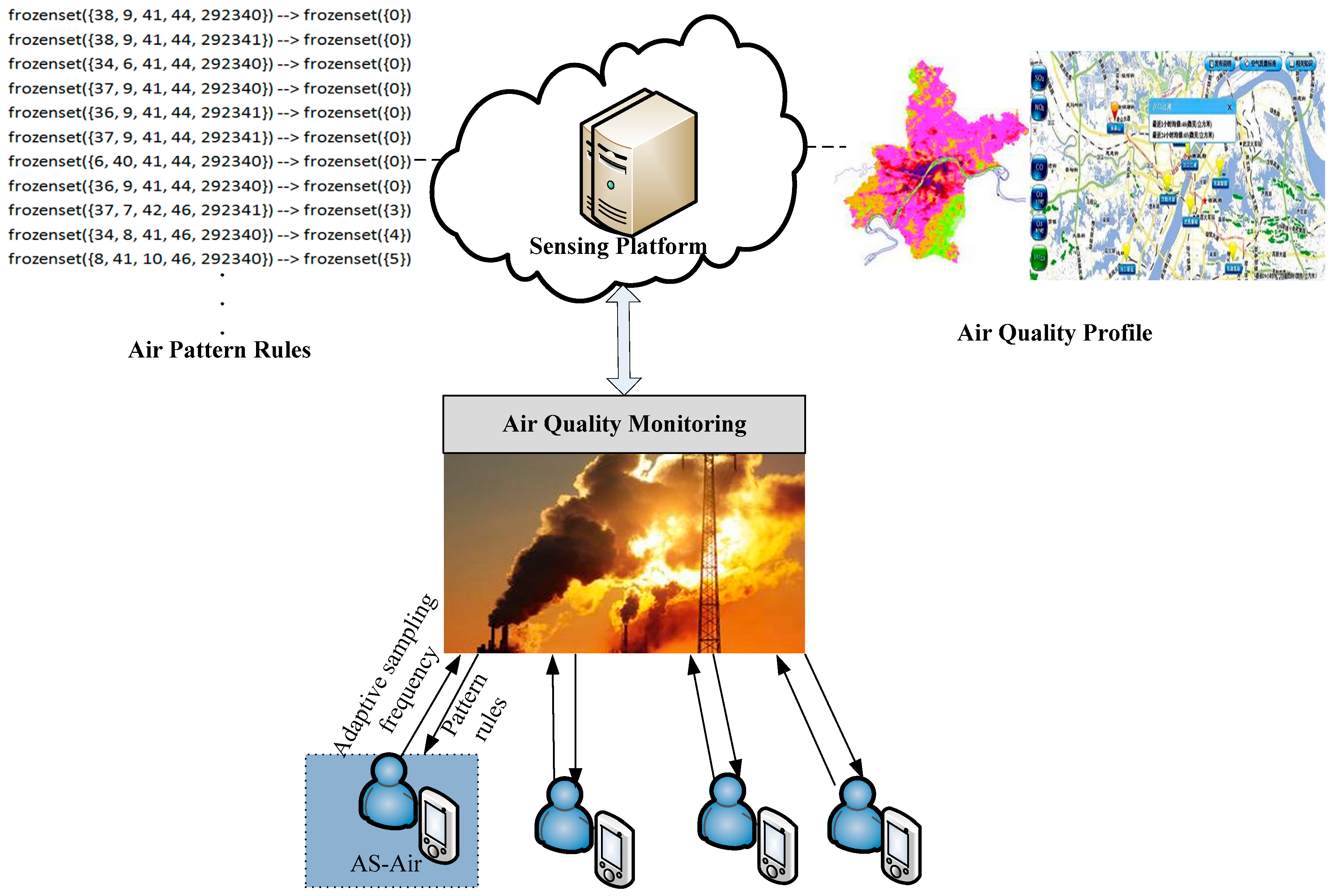
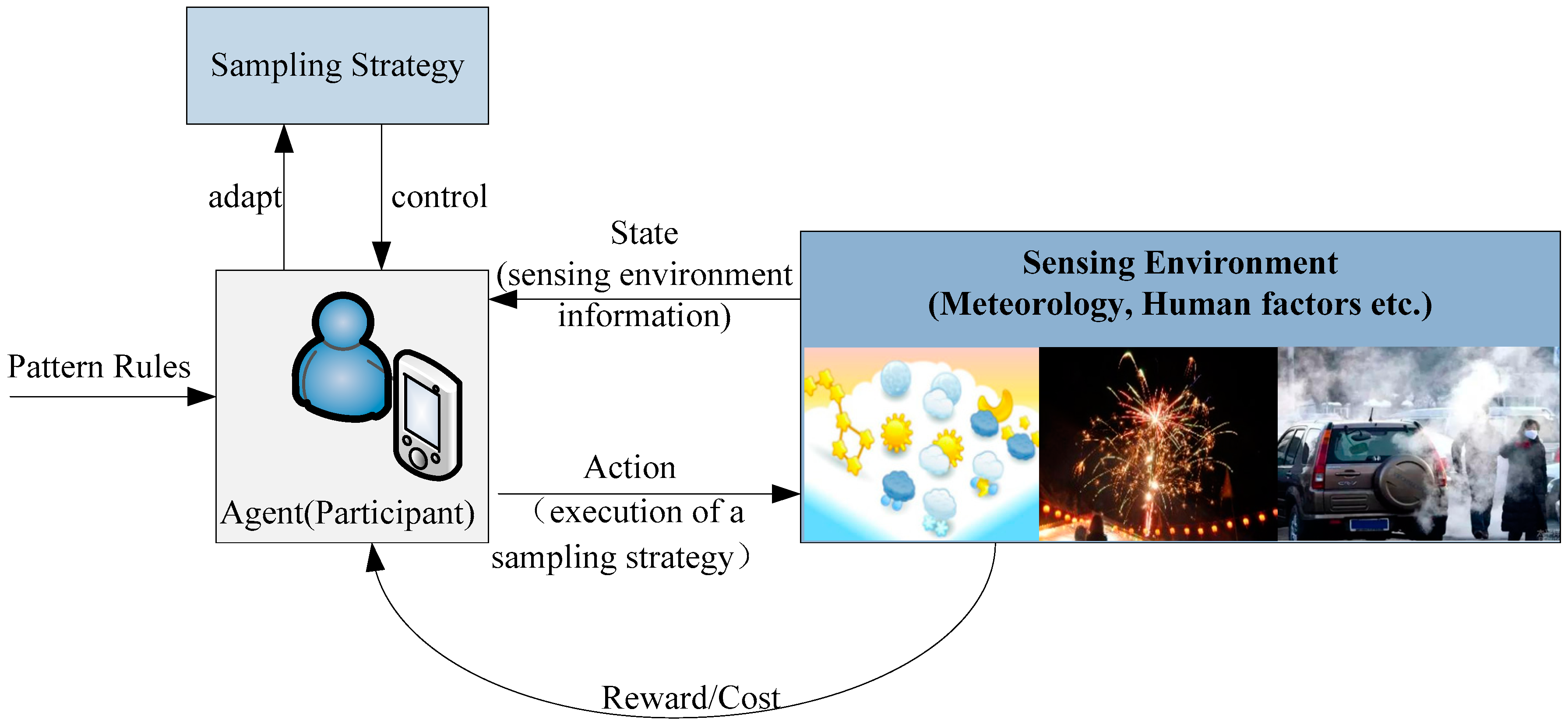
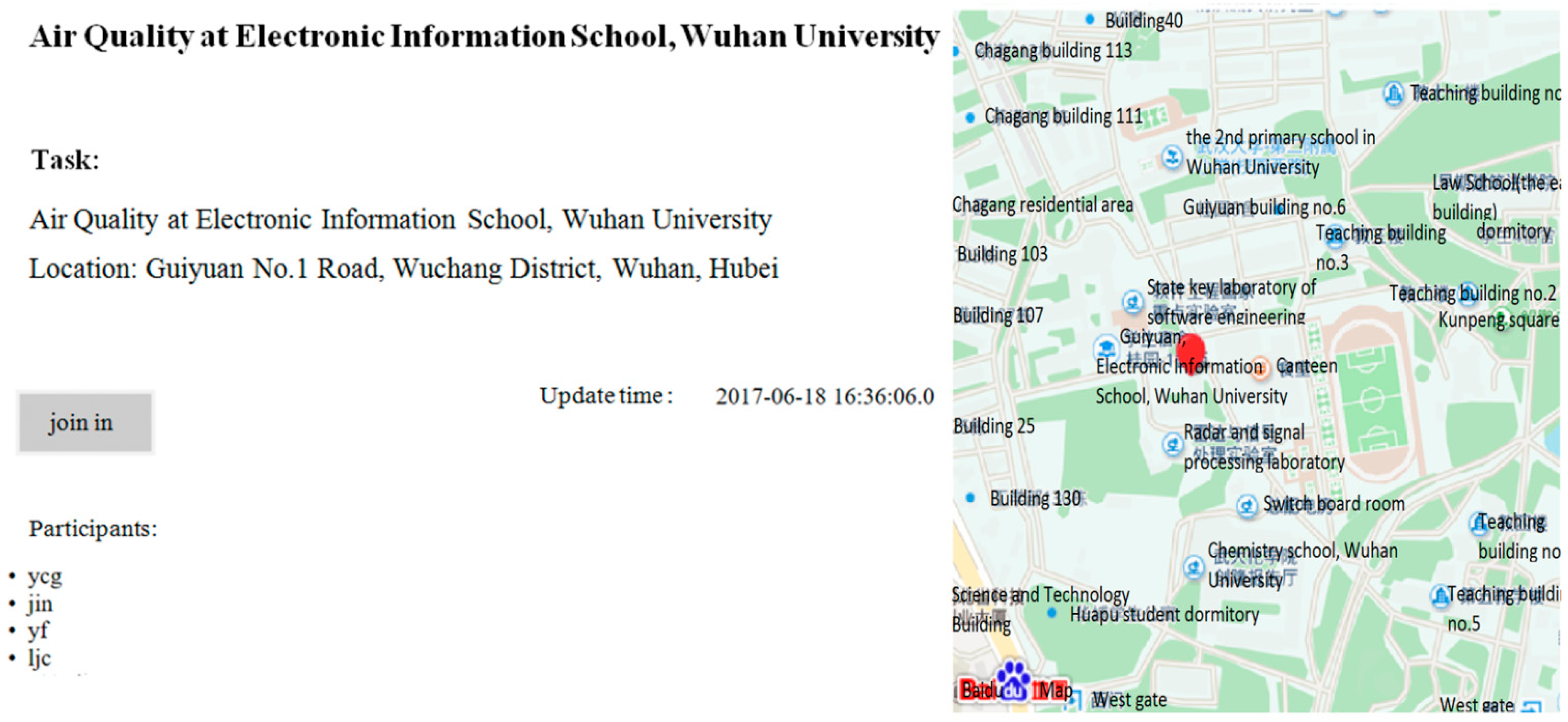


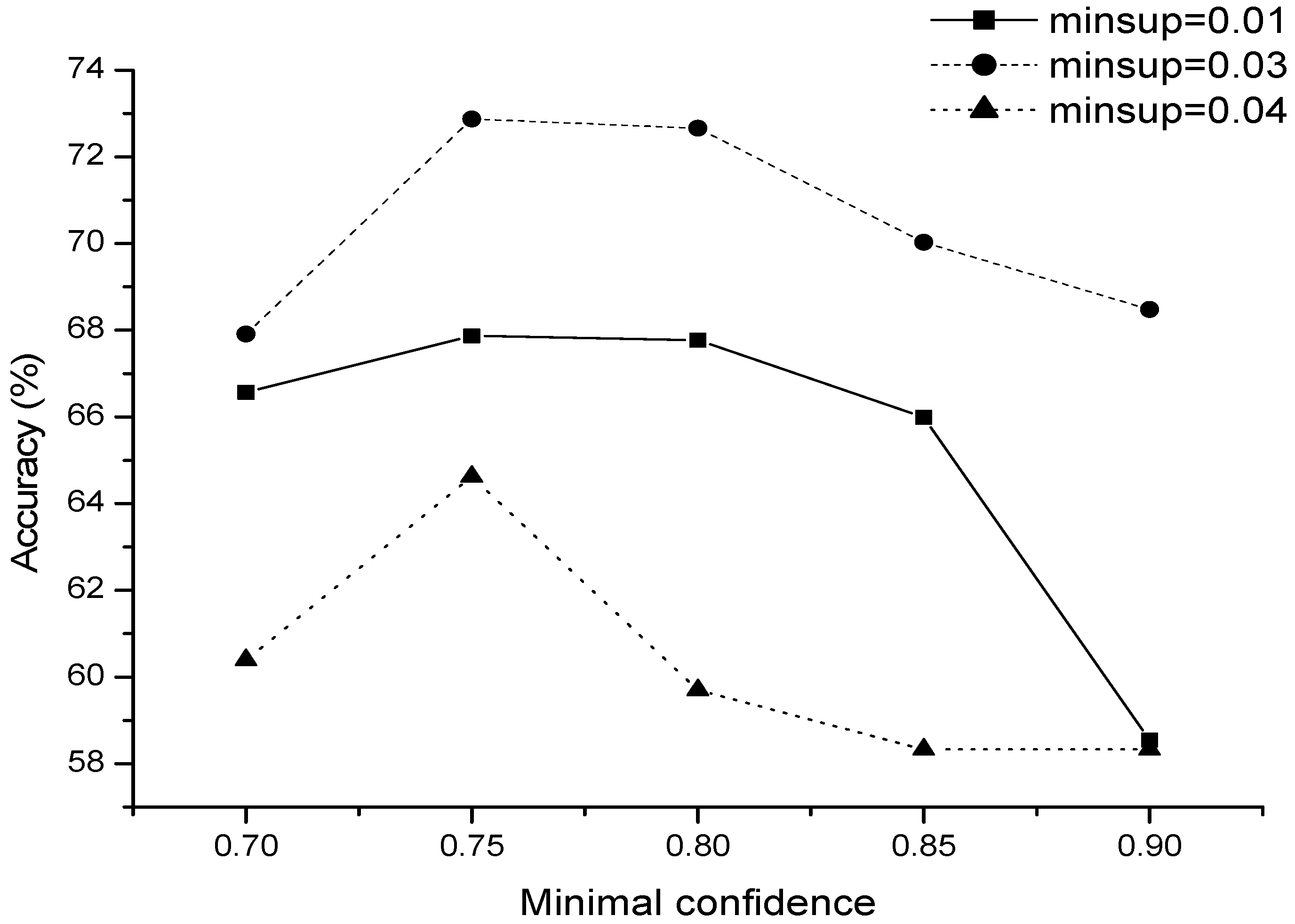
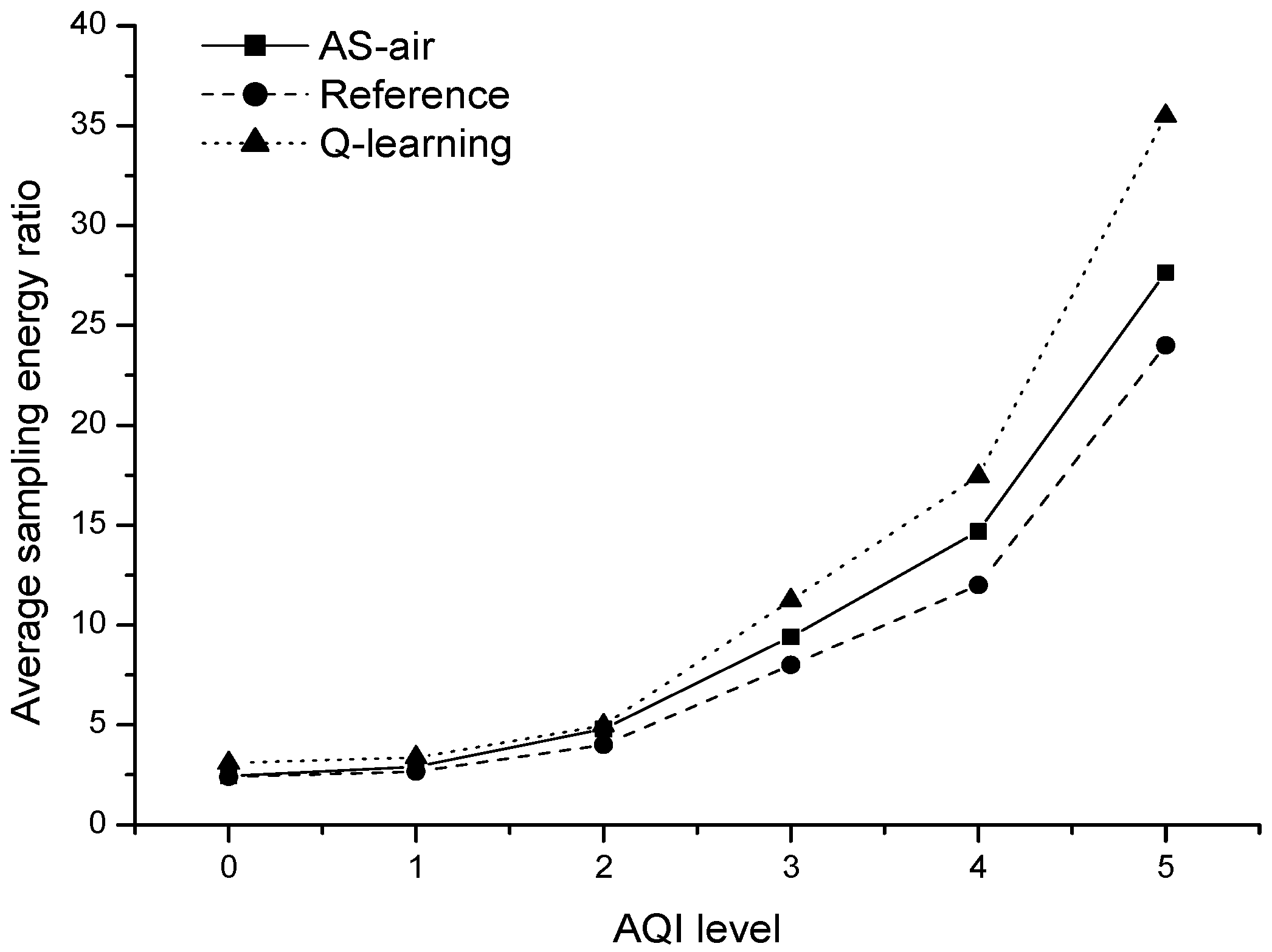
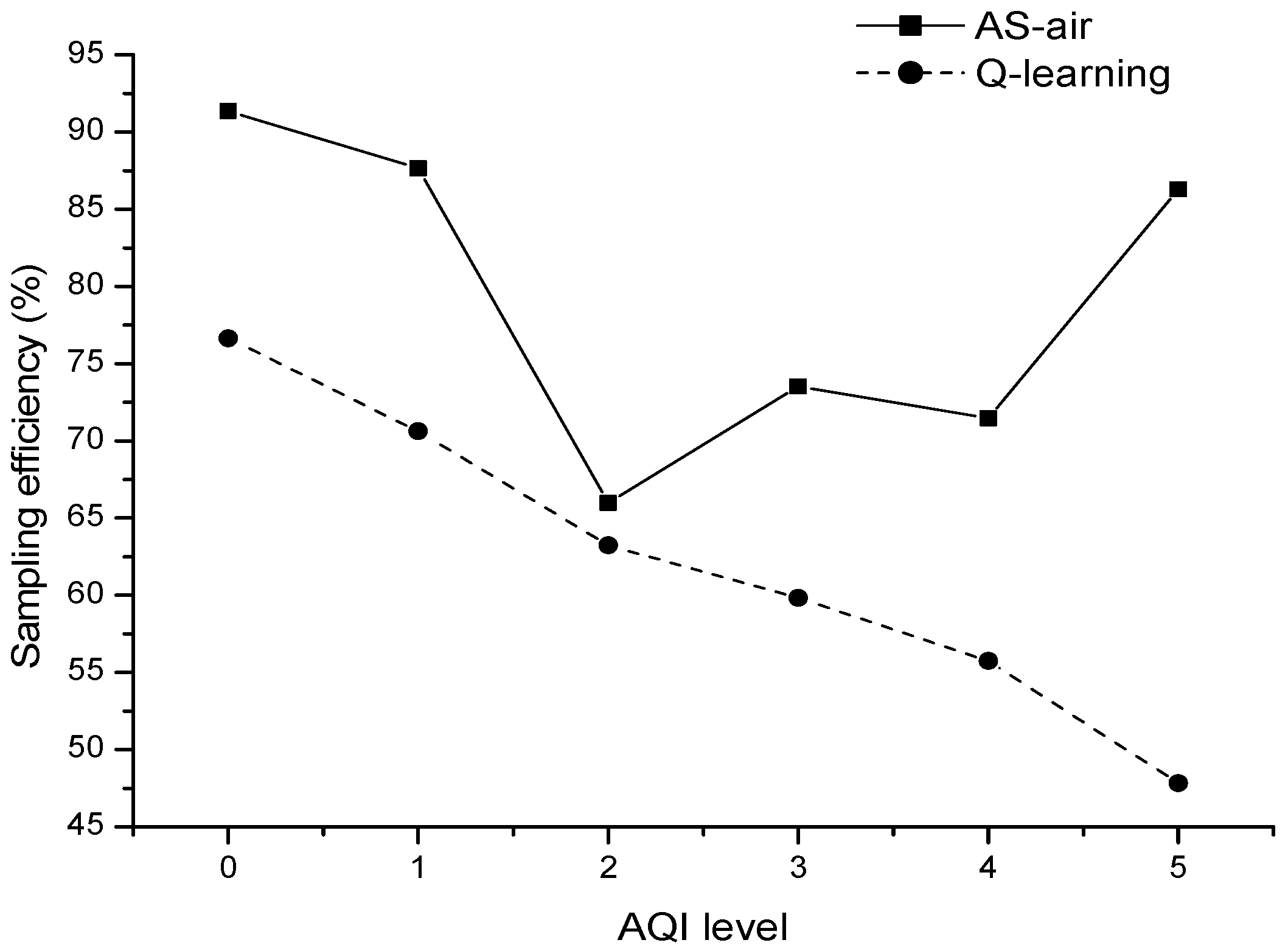
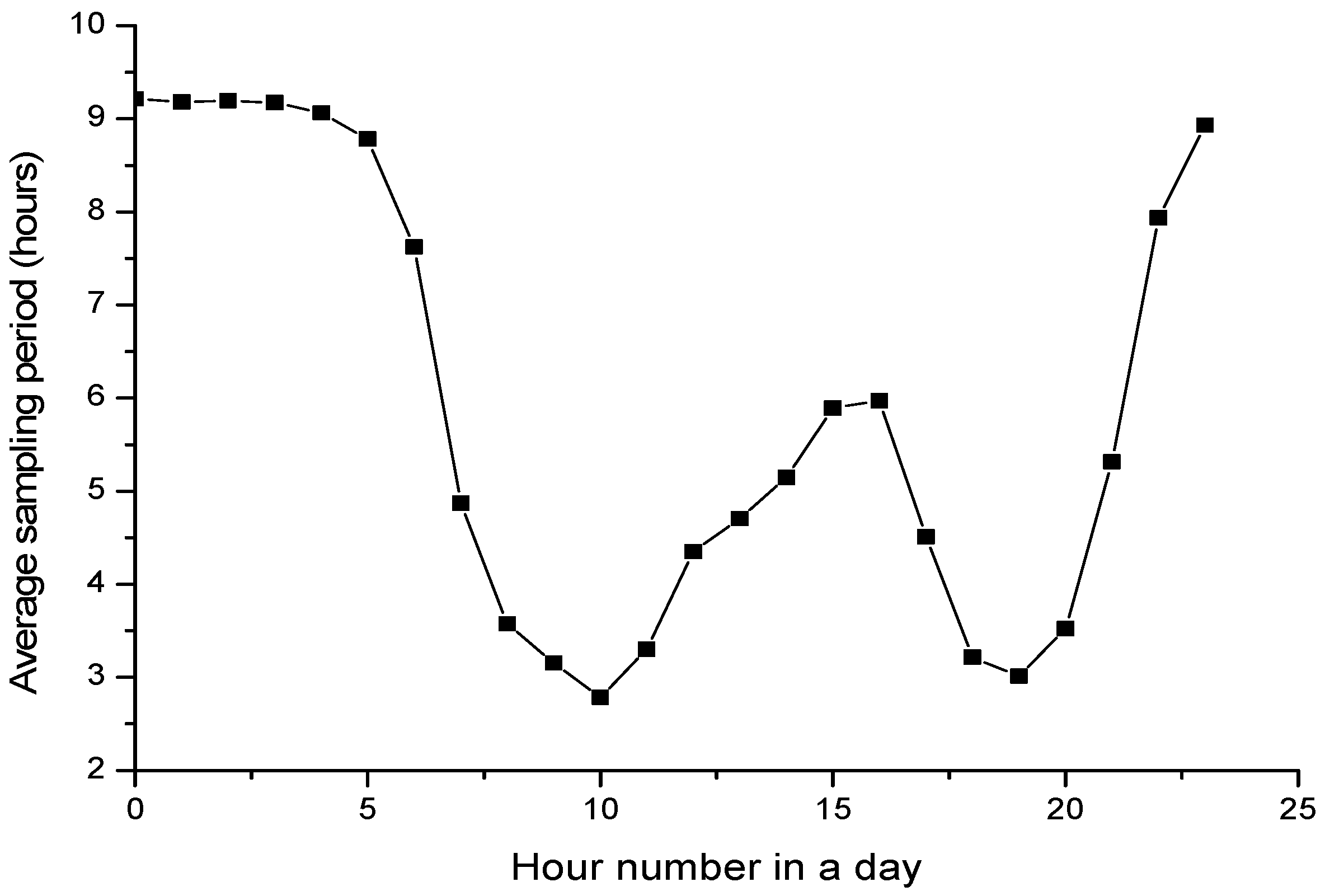
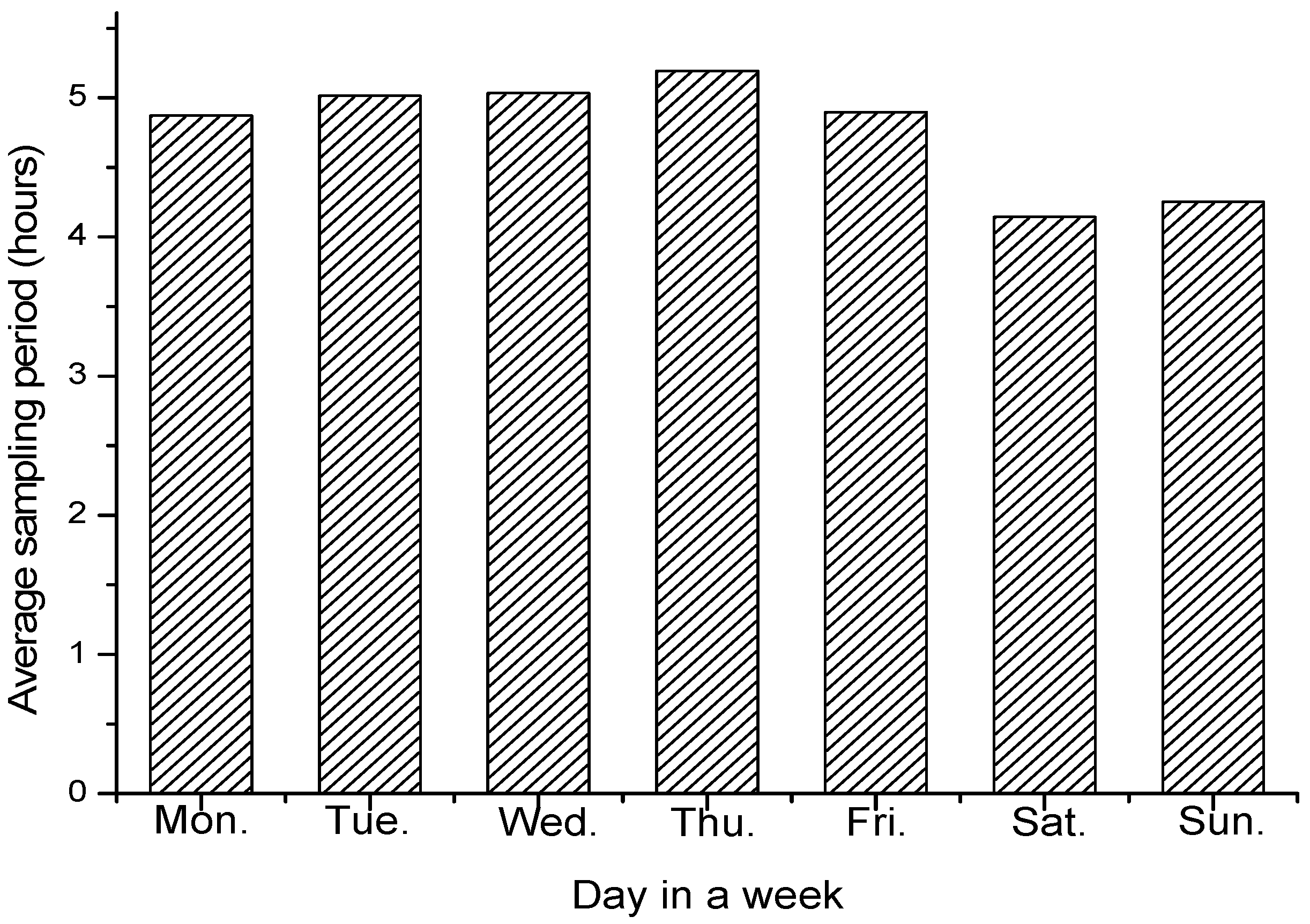


© 2017 by the authors. Licensee MDPI, Basel, Switzerland. This article is an open access article distributed under the terms and conditions of the Creative Commons Attribution (CC BY) license (http://creativecommons.org/licenses/by/4.0/).
Share and Cite
Zeng, Y.; Xiang, K. Adaptive Sampling for Urban Air Quality through Participatory Sensing. Sensors 2017, 17, 2531. https://doi.org/10.3390/s17112531
Zeng Y, Xiang K. Adaptive Sampling for Urban Air Quality through Participatory Sensing. Sensors. 2017; 17(11):2531. https://doi.org/10.3390/s17112531
Chicago/Turabian StyleZeng, Yuanyuan, and Kai Xiang. 2017. "Adaptive Sampling for Urban Air Quality through Participatory Sensing" Sensors 17, no. 11: 2531. https://doi.org/10.3390/s17112531



